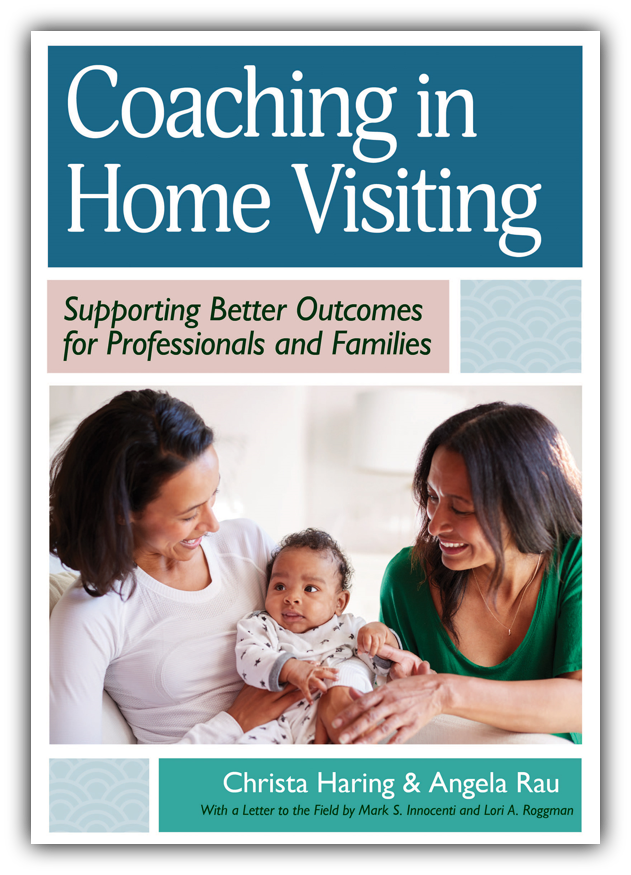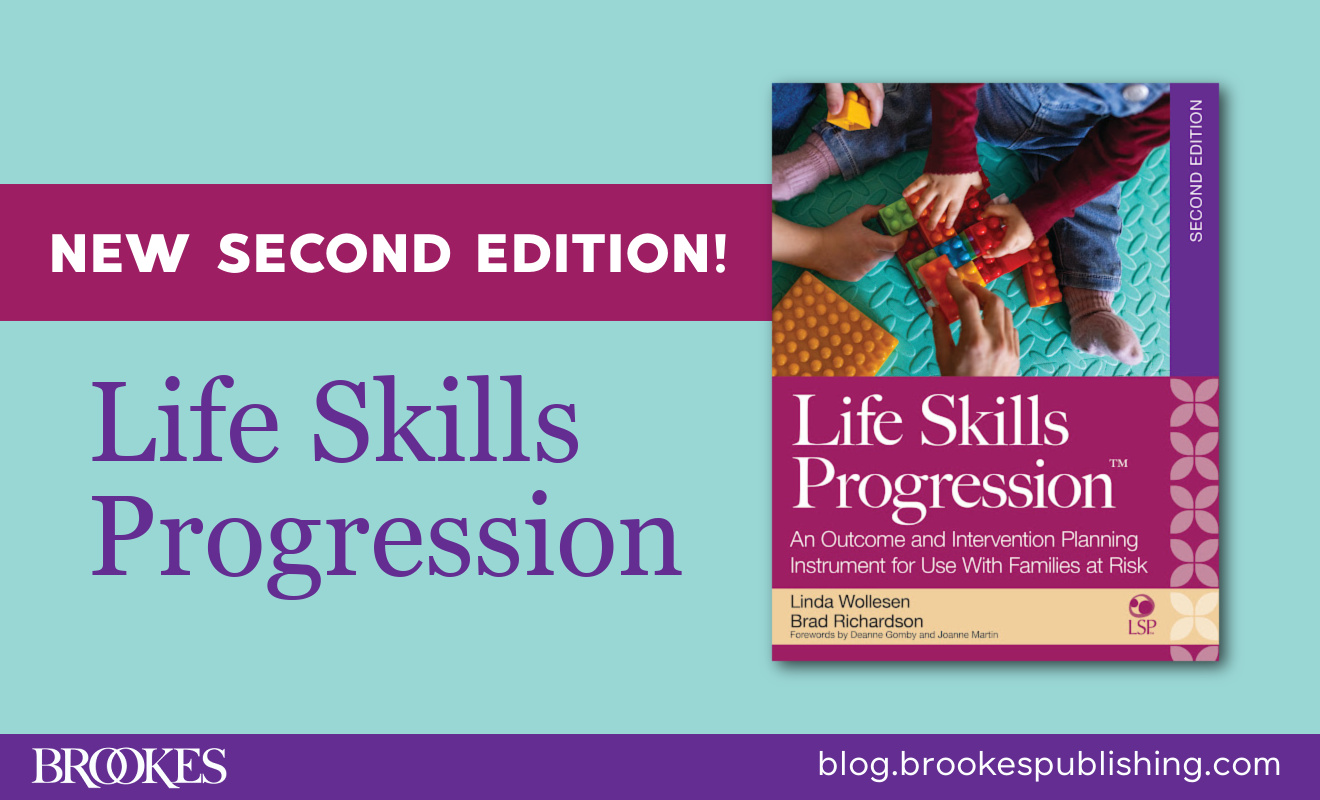Home Visiting Tips: 11 Things to Do When Giving Feedback to Families
August 15, 2024
 In their new book Coaching in Home Visiting, Christa Haring and Angela Rau give supervisors effective strategies to coach home visitors—and give home visitors principles and practices for coaching families of young children. Adapted from a chapter by Christa Haring and Rebecca Beegle, today’s post focuses on 11 practices a home visitor should adopt when giving feedback to a caregiver they’re coaching. Following these guidelines will help make the feedback process more comfortable and constructive for everyone!
In their new book Coaching in Home Visiting, Christa Haring and Angela Rau give supervisors effective strategies to coach home visitors—and give home visitors principles and practices for coaching families of young children. Adapted from a chapter by Christa Haring and Rebecca Beegle, today’s post focuses on 11 practices a home visitor should adopt when giving feedback to a caregiver they’re coaching. Following these guidelines will help make the feedback process more comfortable and constructive for everyone!
Remember the 3-to-1 ratio. One of the easiest ways to gain a parent’s buy-in is to make them aware that you don’t simply see weaknesses, but also strengths. One approach to providing feedback for each coaching visit is to use a technique called “glows and grows.” A “glow” is a specific example of something the caregiver did that demonstrated competency or improvement. A “grow” is a specific recommendation for something the parent can do to move toward meeting an objective. Most individuals are more receptive when the glows outnumber the grows. A good practice is to give two or three glow statements for every grow goal.
Focus on the specific. To positively reinforce behavior so the parent is compelled to repeat it, the parent needs to know exactly what she did that caused you to offer praise. In this instance, glows must be specific. Telling the parent “Great visit!” is not instructive. Saying “I noticed that when your child wasn’t sure how to respond to your question, you scaffolded by restating the question in different terms” lets the caregiver know that her scaffolding was both noticed and effective.
Pick two. As you and the caregiver collaborate to select targets for improvement, pick one or two you will focus on together. Between now and the next home visit, take time to break the targets into action steps you can guide the parent to take. Plan how you will teach and/or model the strategies to reduce ambiguity, and how you can provide scaffolds as the caregiver uses the strategies independently. By breaking large changes into manageable pieces, small successes can add up.
Clearly state next steps. For the parent to meet shared goals and expectations for change, he may need support. Give him options about what his next steps could be. These must be specific; “Your son seemed really distracted” does not increase the caregiver’s knowledge or skill. Instead, you might suggest he use a strategy such as shared gaze. “Try sitting with your child on your lap the next time you read so you can see the pages together” gives the caregiver a clearer understanding of specific steps to take.
Create common ground. Overly emphasizing the negative can make a listener feel defensive rather than receptive. Keep the common goal of helping the child grow and develop at the forefront of the conversation. Phrasing such as “What could we do?” or “How can I support you in your efforts to…?” assure the coachee that you will work together through adjustments to reach a common goal.
Adapt to the audience. Individuals react differently to constructive feedback. Some are more sensitive to feedback delivery, while others focus solely on the message. Responsive coaches recognize and adapt to the learning preferences of those they are teaching. People rise to expectations if the message is presented appropriately. Respecting a caregiver’s time, honoring their voice, validating their experiences, and valuing their contributions will take you further than simply pointing out flaws. Asking questions to clarify a family’s actions may shed light on their cultural beliefs, values, and priorities.
Remember that the parent is the expert (and so are you). Everyone comes to the table with their own set of experiences—a lens through which they see the world and their interactions. Often coaches learn as much from the person they are coaching as they are hoping to impart themselves. No matter your years of experience, the parent you work with is the expert on their child. Listen to their story.
Listen more than you speak. By asking questions or commenting on what you observe, you can learn why certain choices were made and increase understanding of underlying perceptions and beliefs. The goal is to listen and discern what the family needs by listening to and observing what is spoken and unspoken.
Keep it kind. Respect should be the guiding principle of all feedback. When working with a family, use a respectful tone of voice—not patronizing or apologetic—and choose words wisely. Become comfortable with silence, recognizing that the caregiver may need time to process the information or time to think through a response. Support the opportunity to reflect by asking questions and allowing time for them to do the same.
Strike a balance. Coaching requires that you walk a tightrope. If you focus solely on being objective and neutral in your observations and feedback but fail to engage with the parent as a person, you have technically done your job but may have missed opportunities for growth—both the caregiver’s and your own. However, if your goal is to become the parent’s best friend, and you are afraid you’ll offend or damage the friendship, the parent will miss important growth opportunities.
Put off the problem-solving. As soon as a caregiver reveals a problem they are tackling, our minds often immediately go into “solve-it mode.” We may stop listening to what the parent is saying, because we’re too busy thinking about what words of wisdom we’re going to spout as soon as they stop talking. Sometimes we might even interrupt to present a solution while the parent is still talking. In the end, even if our solutions were valid, the result would be a breakdown in communication. Often, parents aren’t looking for solutions as much as a sounding board for their own ideas. Sometimes, their solutions may be the same as ours—and other times, they’re better. By learning to listen reflectively without jumping in to save the day, we validate caregivers’ concerns as well as their outcomes, and we often learn something in the process.
Want more guidance on coaching in early childhood home visiting programs? Check out the book behind today’s post—a perfect professional development resource for both supervisors and practitioners!




Write a Comment
Your email address will not be published. Required fields are marked *
Post a Comment